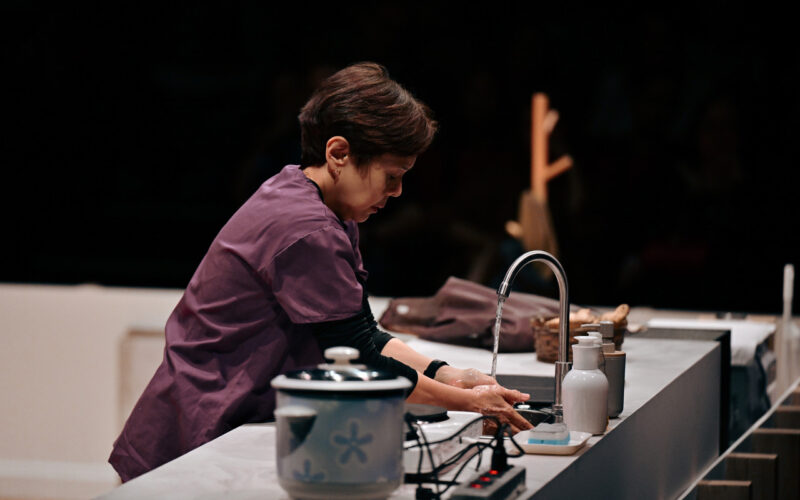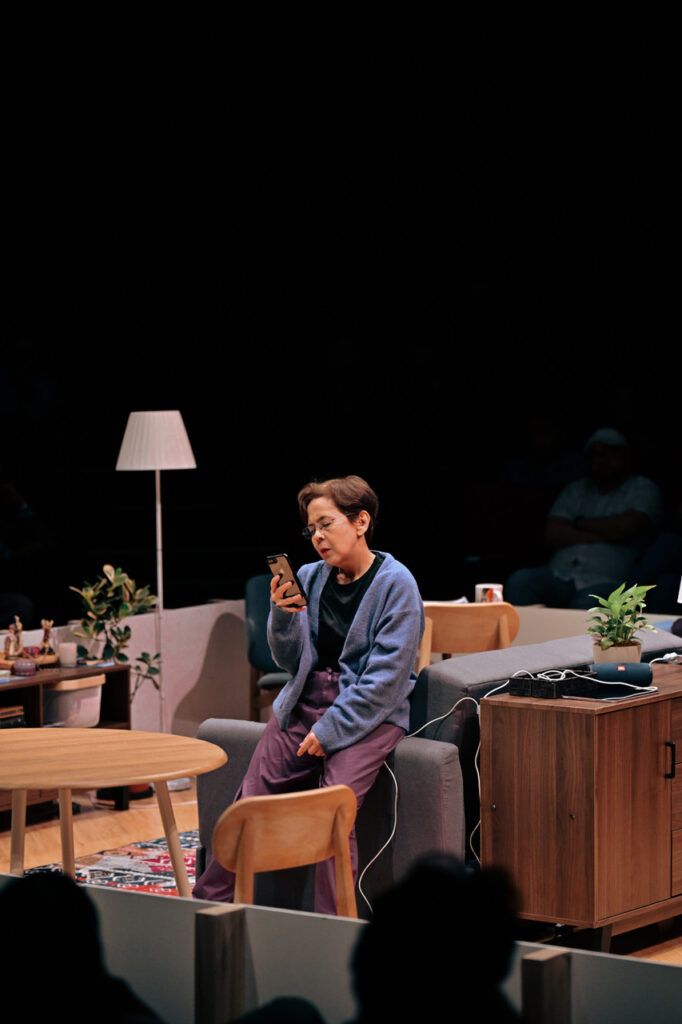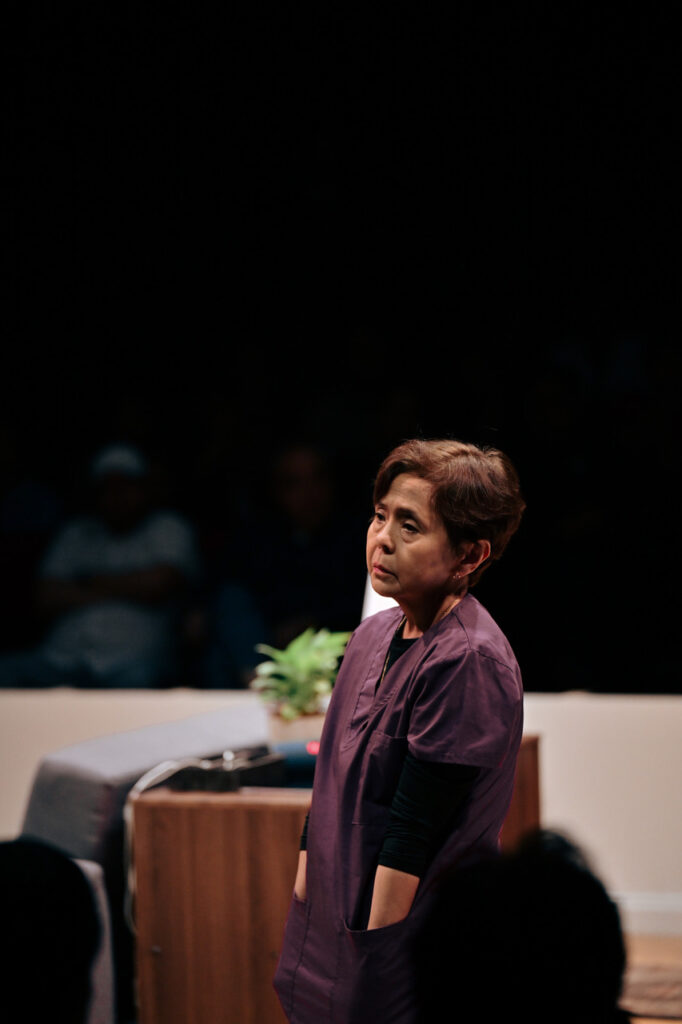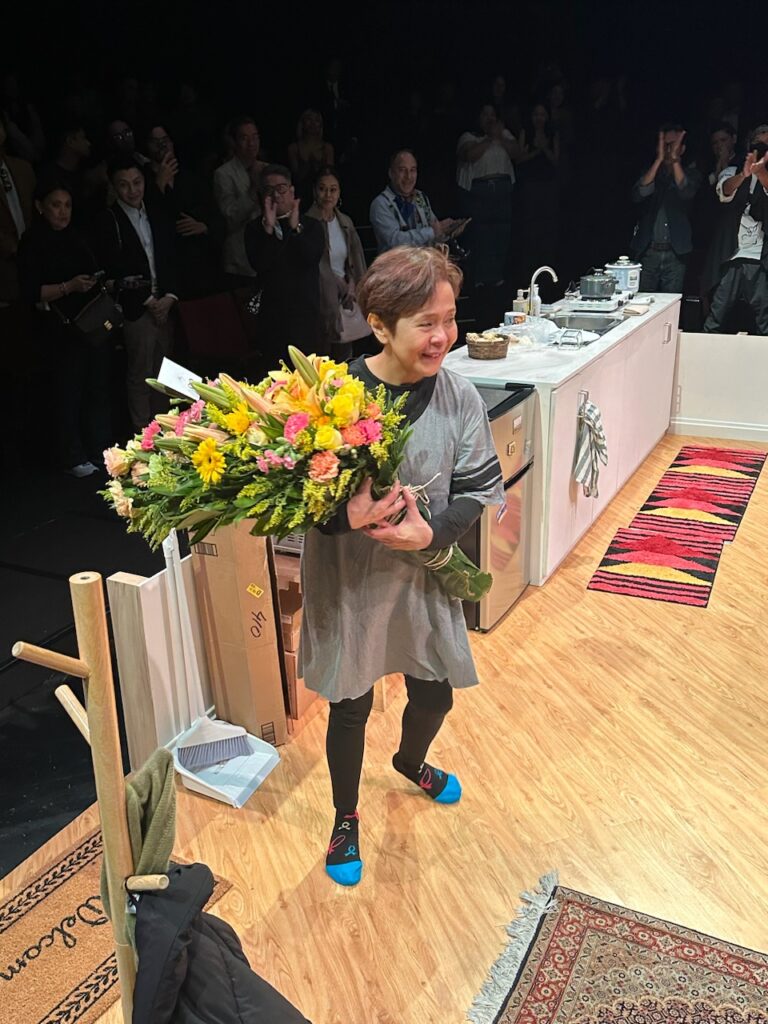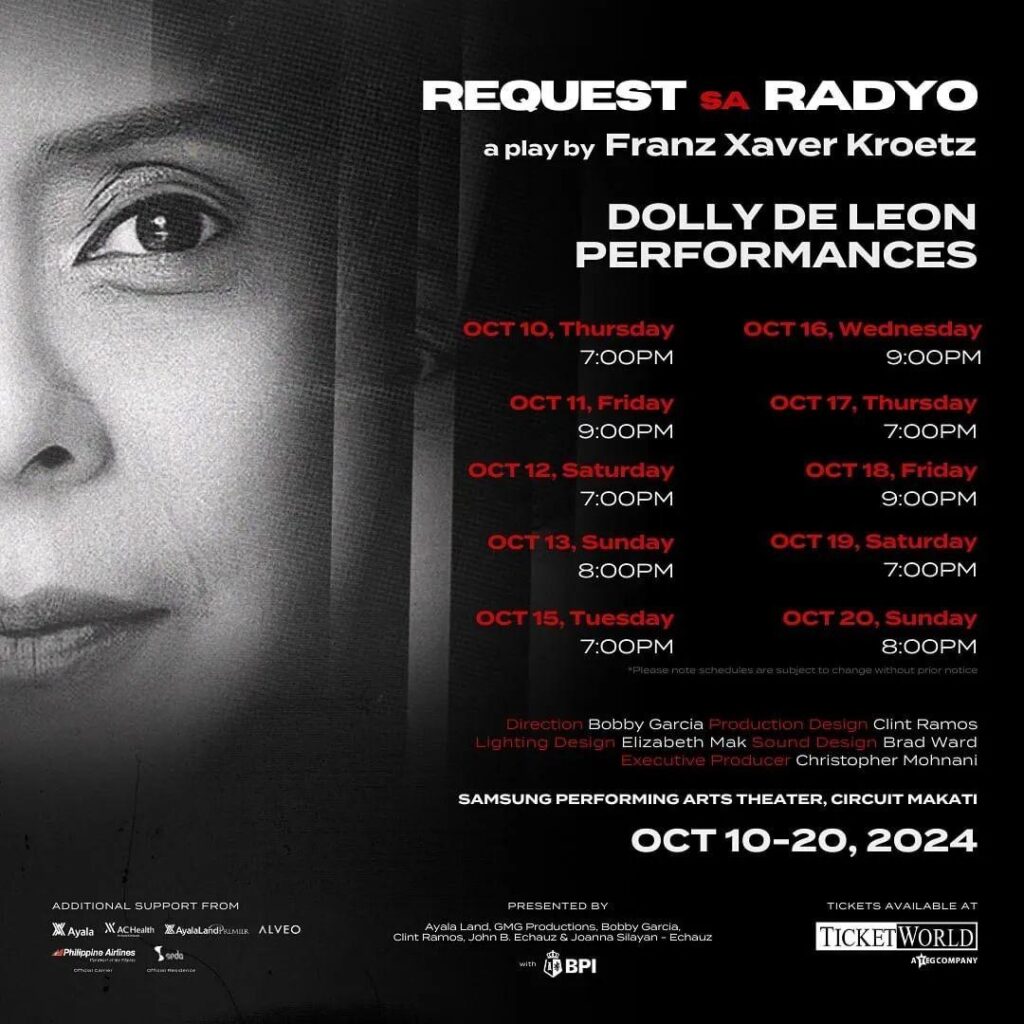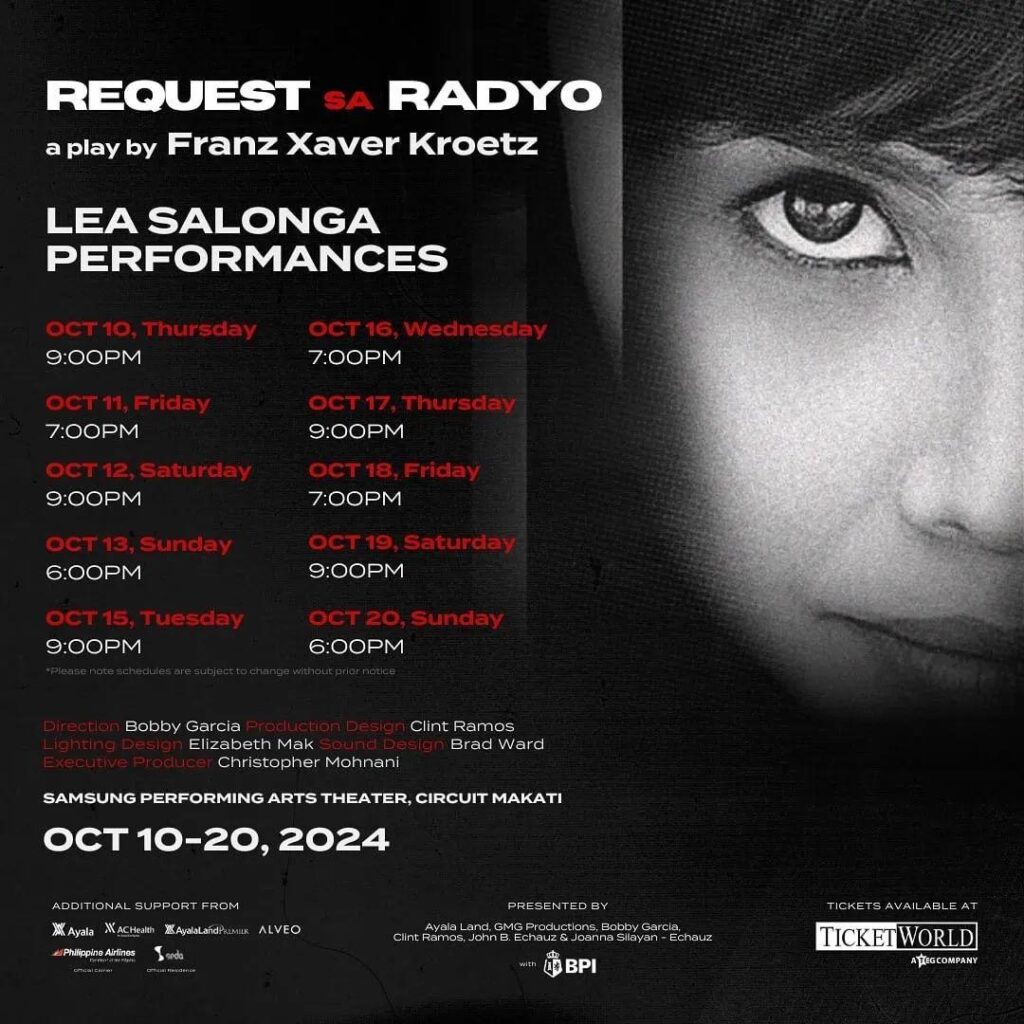A lonely, overworked and seemingly isolated Filipino caregiver based in New York City, played by Dolly de Leon, establishes a connection, albeit a tenuous one, with a community of unknown and unseen fellow listeners of a radio request program. With nothing but the said program standing between her and the abyss of no return, Dolly’s character unravels slowly at first before the pace picks up, pushing her finally to the brink.
By Alex Y. Vergara
Pandemics, so the experts say, happen once in a century. Since we’ve all just survived one, we probably could breathe a collective sigh of relief for now as the next global health scourge isn’t due until at least 2100. But not so fast!
Even as we post and scroll on social media, and send out direct messages to friends and family in our feeble attempts to establish and derive some semblance of connection, there’s a growing epidemic out there that goes by the name of loneliness. And it’s proving to be far deadlier and more entrenched than the first, second and even third waves of COVID-19 combined, killing us one by one without us even knowing it while wreaking havoc on the very fabric of society itself.

Even Filipinos, an innately happy and gregarious people, who are prone to smile and laugh easily at the slightest “provocation” aren’t immune. Once you allow loneliness to take over, there’s no telling what it would do to you and when it would develop into a full-blown case of depression that could further lead to detachment, mayhem, murder and even suicide.
And people behind the latest staging of Franz Xaver Kroetz’ Request sa Radyo (Wunschkorzert) knew very well that it would take a lot to bring the average Filipino down. Under the helm of director Bobby Garcia and production designer Clint Ramos (who, together with former principal danseur and Samsung Performing Arts Theater managing director Chris Mohnani, produced the show), the stage has already been set for the play’s one and only character, an overworked and isolated everyday Filipino caregiver transplanted in New York City, who’s now teetering on the precipice of reason as she makes her final stand.

All alone in late fall in a studio-type flat, when suicide rates in temperate countries start to spike as temperatures begin to dip and daylight becomes shorter, and with only a radio request show to keep her company, Ms. Reyes (played with spot-on clarity and earnestness by Dolly de Leon during a special preview last Wednesday before the play’s regular run), from the get-go, provides the audience with an inkling of what’s bound to happen to her in the end the minute she enters the scene.
Again, it’s not so much about the destination, but how she gets there that makes this lean-and-mean production composed of a multi-awarded cast and crew worth your time and money.
Looking forlorn, her shoulders almost hunched presumably from working her butt off for hours on end, Ms. Reyes arrives to a tiny, nearly lifeless home, and for 70 minutes or so never says a single word as she putters around the kitchen, cooks and eats dinner, pees in the toilet and, at one point, dances with abandon to the music playing on the radio. She doesn’t need to. Through Dolly’s bright but sunken eyes and lined face, Ms. Reyes is able to speak volumes.
Although the character is presumably already dying inside long before she returns home from work, she appears very much alive outside, showing classic signs of obsessive-compulsive behavior like washing the dishes and what have you that she has just used for cooking. This she does even before she could manage to sit down and enjoy a proper dinner. Scrubbing the toilet instead of merely flushing it every time she’s finished doing her business is also second nature to her.
Some people might dismiss such actions as mere quirks to move the narrative forward and keep audiences from dozing off. But if you look closely, they are obvious signs of a character trying in vain to control things and situations around her that in her mind she still believes she has control over before things begin to unravel and eventually spiral out of control during the play’s last 10 minutes.
It isn’t all doom and gloom though, as Ms. Reyes, perhaps summoning her last reserves of hope and sense of purpose, drags herself through her tiny house as she prepares dinner for one.
And she does everything with amazing efficiency, even managing to finish an artwork before treating herself to a huge bite of cake, washing her face, applying moisturizer, slipping into her jammies, and saying her evening prayers. At one point earlier in the show, she even takes out a pair of Pyrex containers supposedly containing heated food from the microwave oven without using kitchen mittens. Is it a production oversight or simply a way to portray the character in an oblivious state of mind?
But the moment she crumples and throws that same piece of artwork she has supposedly been working hard on for days, even weeks, a few minutes later, you know immediately that something inside her has already snapped. True enough, it’s only a matter of time–as in seconds–before Ms. Reyes’ mind completely goes off the rails.
In the hands of a lesser actress, the temptation to rely purely on technique and the usual posturing clichés to convey whatever emotions the character is feeling would have been great. But not Dolly, who once again tapped into decades of professional and even perhaps personal experiences in breathing life to various characters both on stage and on the big and small screens to flesh out the lonely and despondent Ms. Reyes.
Technique is something you can learn and master, and every actress, at one point or another, uses it to her advantage and as the need arises. But instinctive acting and drawing emotions from the gut, like one’s fingerprints, are an indelible part of who you are. And Dolly possesses these gifts in spades, combining technique while also tapping every so often into a wellspring of raw emotions to make her character more real, more authentic and more relatable whether during light happy moments or during dark, no-way-out situations.
The formula they say, if there ever was one, hasn’t changed for millennia. To live a long, healthy and full life, one must learn to weave these four basic elements into one’s existence: good nutritious food, adequate sleep, the right amount of exercise; and meaningful human connections that give one a sense of purpose.
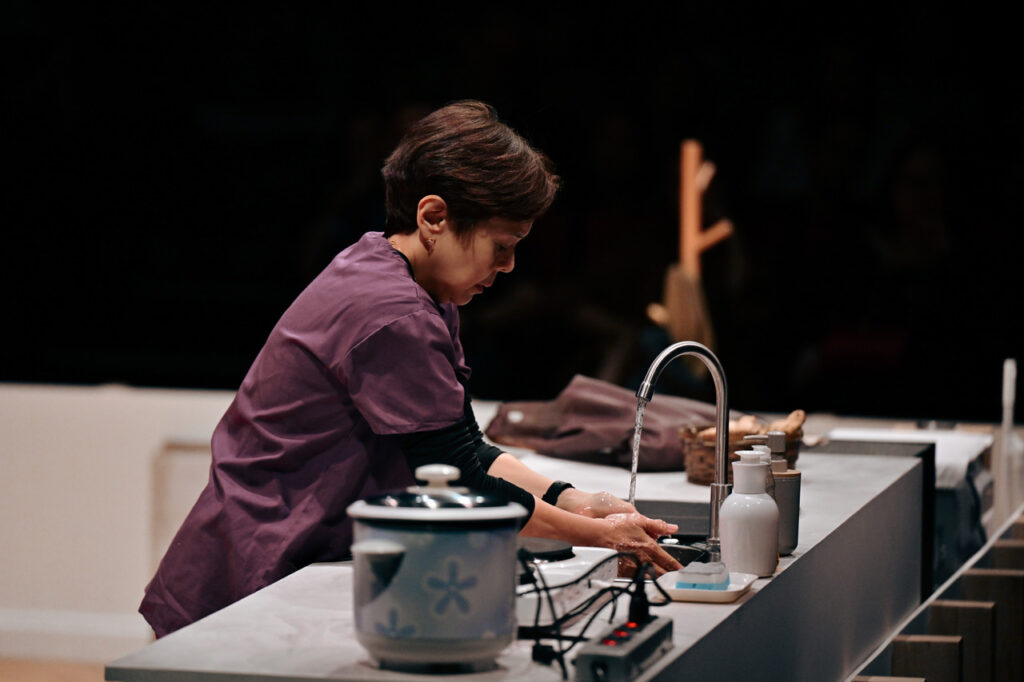
Of the four, the hardest element to achieve and maintain is one’s quest for meaningful connection/s. But it’s a must if one hopes to lead a long, happy, and purpose-driven life as opposed to merely plodding on, making do, and enduring a meaningless one.
But what would ultimately push a person, whose instinct is to preserve herself at all costs, to raise her hands up in surrender and throw it all away? That’s what Request sa Radyo tries to explore and answer.
And in the hands of Dolly de Leon, whose nuanced performance allows you to see the character’s progression from hope to making do to utter despair and resignation within the span of one supposedly humdrum evening, the answer is loud and clear.
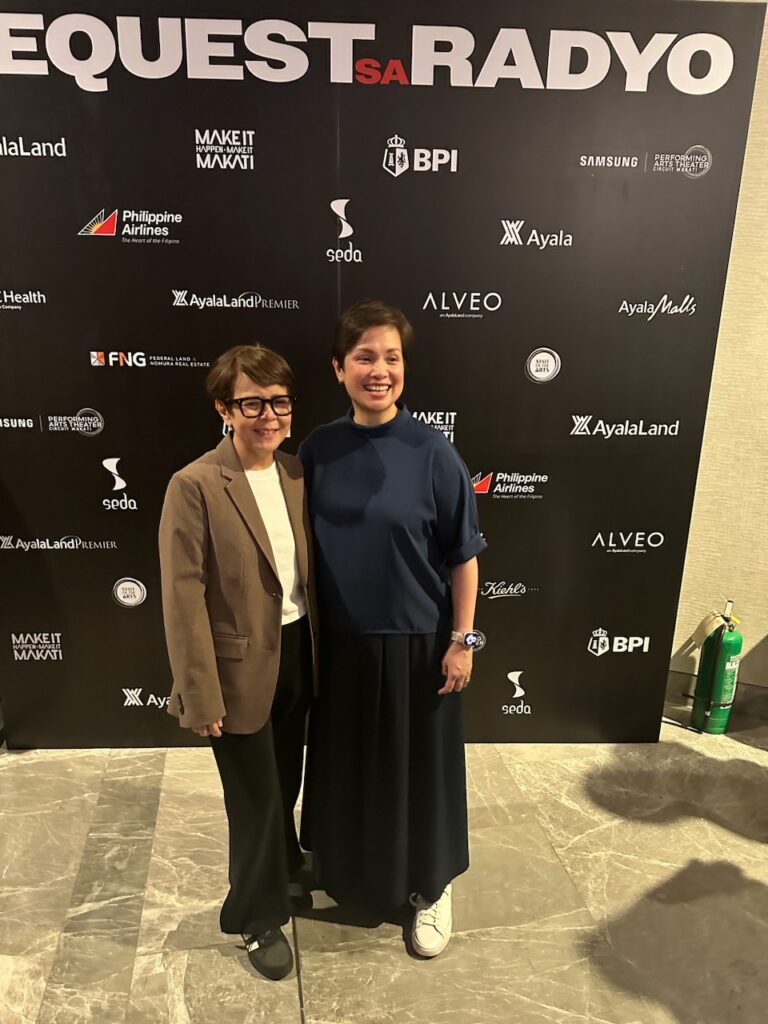
Request sa Radyo will run until October 20 at the Samsung Performing Arts Theater, Circuit Makati. For schedules and where to get tickets, please see accompanying photos below.

